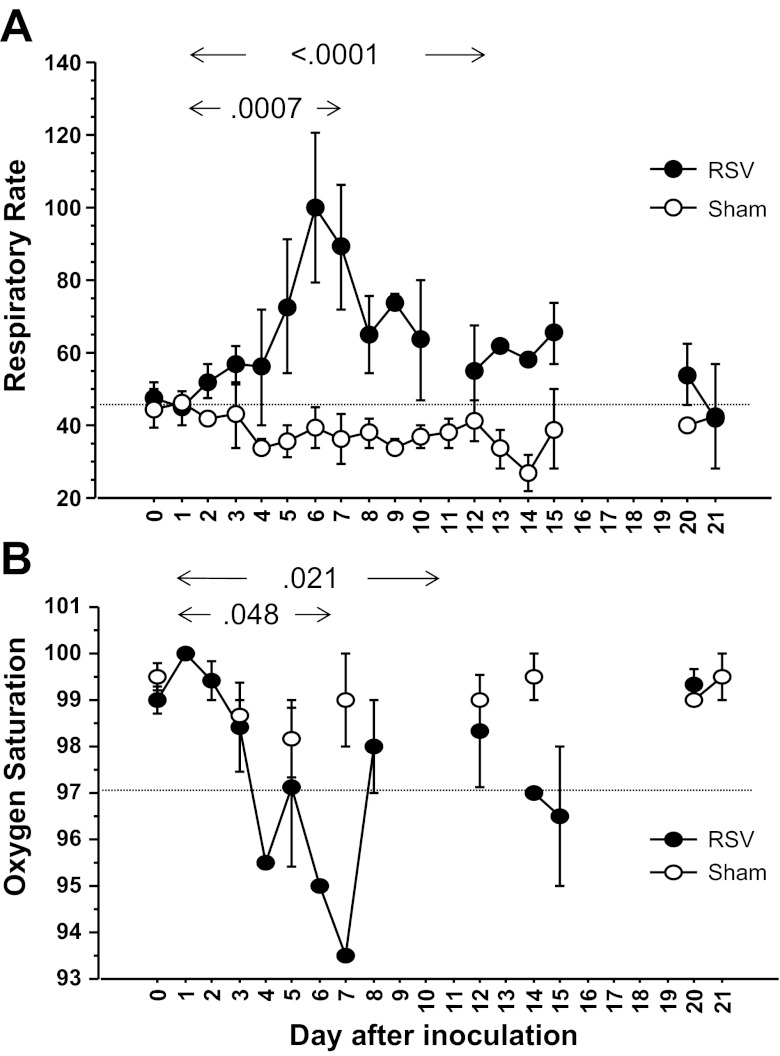Fig. 1.
Respiratory syncytial virus (RSV) infection causes increased respiratory rates and reduced oxygenation in infant baboons. Values illustrated were obtained from 13 baboons infected it and 3 sham infected (uninfected tissue culture cell preparations). For respiratory rate values in RSV-infected baboons (A), n = 12 on day 0, n = 3–6 from days 1 to 8 and days 2 to 3 thereafter. For sham-infected baboons, n = 2–3 at all points. For oxygen saturation (O2sat) values in RSV-infected baboons (B), n = 12 on day 0 and n = 3–6 at all other points. For sham-infected baboons, n = 2–3 at all points. Each point represents the mean ± SE. The horizontal axis represents days after inoculation of baboons. Respiratory rates determined in it-infected baboons from days 1 to 8 and from days 1 to 15 differed significantly from those in sham-infected baboons over the same intervals (P = 0.0007 and P < 0.0001, respectively). O2sats (B) measured from days 1 to 8 and from days 1 to 15 also differed between it-infected and sham-infected baboons (P < 0.048 and P = 0.025, respectively).

